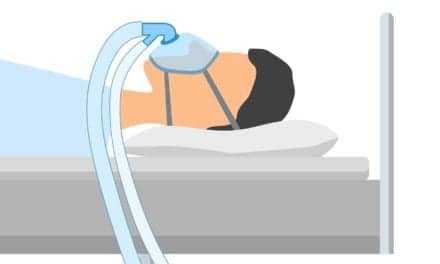A report from the Optometry Times investigates the impact of sleep apnea on the eye.
Fewer than five percent of those with OSA have FES, but approximately 100 percent of those with FES have OSA, says Dr. Sutton. FES is most common in overweight men. Because the eyelids are loose and rubbery, they easily evert which may cause problems during sleep if lids come in contact with the pillow. Patients with FES often experience dry, gritty, irritated eyes when they wake up but improves as the day goes on. They also may experience punctate keratitis, conjunctivitis, mucous discharge, and can get mucous fishing syndrome.
NAION is very highly associated with OSA, says Dr. Sutton, citing one study that found 12/17 NAION patients had OSA, compared to 3/17 controls.
Both open-angle glaucoma and normal-tension glaucoma are common in patients with OSA, but the prevalence varies widely among studies. Studies have found that up to 27 percent of OSA patients have open-angle glaucoma, and 43 percent have normal-tension glaucoma, although most studies have found the rates to be lower. The incidences is believed to be related to poor blood flow and decreased oxygen delivery to the optic nerve.
The association with papilledema is unclear, but it may be due to the common risk factor. The cause of ICSC in OSA patients is also unknown, but it may be due to increased epinephrine causing increased catecholamine levels.


